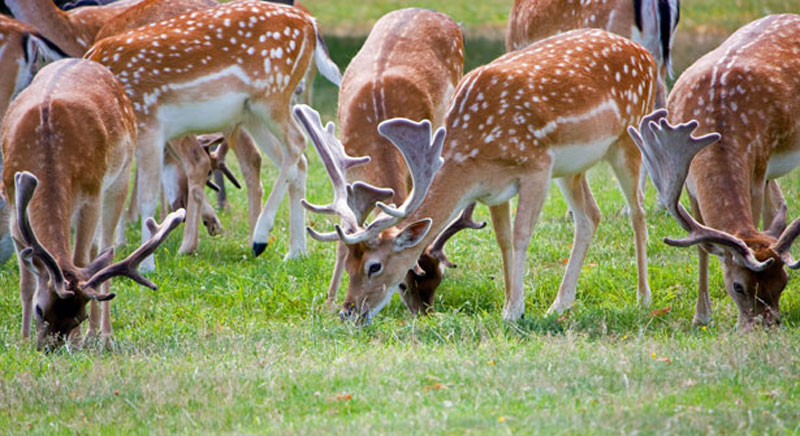
In the UK we have six species of deer
- Red – cervus elaphus
- Sika – cervus nippon
- Fallow – dama dama
- Roe – capreolus capreolus
- Muntjac – muntiacus reevesi
- Chinese Water Deer – hydropotes inermis
Deer Gallery
[gdl_gallery title=”Deer Species” width=”175″ height=”150″ ]Deer inhabit all areas of the UK mainland; some species are more prolific in certain areas and not others. Throughout Dorset and Hampshire we commonly come across most of the larger species like red, sika, roe and fallow, however the muntjac and Chinese water deer are rarely seen locally, they tend to be further north and cover much of the UK these two non indigenous species originated in this country from the Duke of Bedford’s Woburn estate.
Deer can only be controlled whilst in season and each species has different times of the year when it can be controlled either by species or sex, five of the six resident species have open and closed seasons except the muntjac which can be controlled all year round due to its ability to breed at any time of the year.
Seasons.
| Species | Sex | England Ireland, Wales | Scotland |
| Red | Stags | Aug 1st – April 30th | July 1st – Oct 20th |
| Hinds | Nov 1st – March 31st | Oct 21st – Feb 15th | |
| Fallow | Bucks | Aug 1st – April 30th | Aug 1st – April 30th |
| Does | Nov 1st – March 31st | Oct 21st – Feb 15th | |
| Sika | Stags | Aug 1st – April 30th | July 1st – Oct 20th |
| Hinds | Nov 1st – March 31st | Oct 21st Feb 15th | |
| Roe | Bucks | April 1st – Oct 31st | April 1st – Oct 20th |
| Does | Nov 1st – March 31st | Oct 21st – Mar 31st | |
| Red/Sika Hybrids | Stags | Aug 1st – April 30th (NI only) | July 1st – Oct 20th |
| Hinds | Nov 1st – March 31st( NI only) | Oct 21st – Feb 15th | |
| Chinese Water Deer | Bucks | Nov 1st – March 31st | — |
| Does | Nov 1st – March 31st | — | |
| Muntjac | No Closed Season | No Closed Season |
Why Control and Manage Deer?
There are many valid reasons to control and manage deer
- Damage to trees, woodland flora and wildlife habitats
- Damage to farm crops and gardens, golf courses and parks
- Increase in Traffic incidents, accidents and road kill
- Poor health for the deer themselves if the numbers are greater than the habitat can support
Why MBC Wildlife Management?
All of our staff involved in the control of deer are professional deer stalkers and have a great understanding of the species and the countryside habitats in which they are found. To qualify they must hold DSC level 1 as a minimum requirement and demonstrate knowledge and skills in the following areas.
- The life and reproductive cycles, habitat requirements and behaviour of the six species of wild deer.
- Be firearms licensed, hold an open certificate and understand the legal basis for the use of firearms and the culling of deer
- A broad knowledge of stalking techniques, points of aim and the reaction of the deer following shot placement
- Deer identification and being able to distinguish between the male and female of each species in summer and winter pelage
- The ability to safely handle firearms, knives; understand range finding and extraction equipment and the ability to distinguish what is a safe shot.
- An ability to shoot accurately and consistently at all times
Deer are protected under the:
- Agriculture Act 1947
- The deer Act 1991
- Firearms Act 1968
- Wildlife and Countryside Act 1981
- Wild Mammals (protection) Act 1996
We offer deterrent methods where applicable such as deer proofing, electric fencing and exclusion
fencing for the residential customer.
Contact us if you have a deer problem and require a free survey and quotation to control and manage your deer problems professionally, humanely and legally
Tel: 01202-604011 or 07968 052219 email or quick contact.
